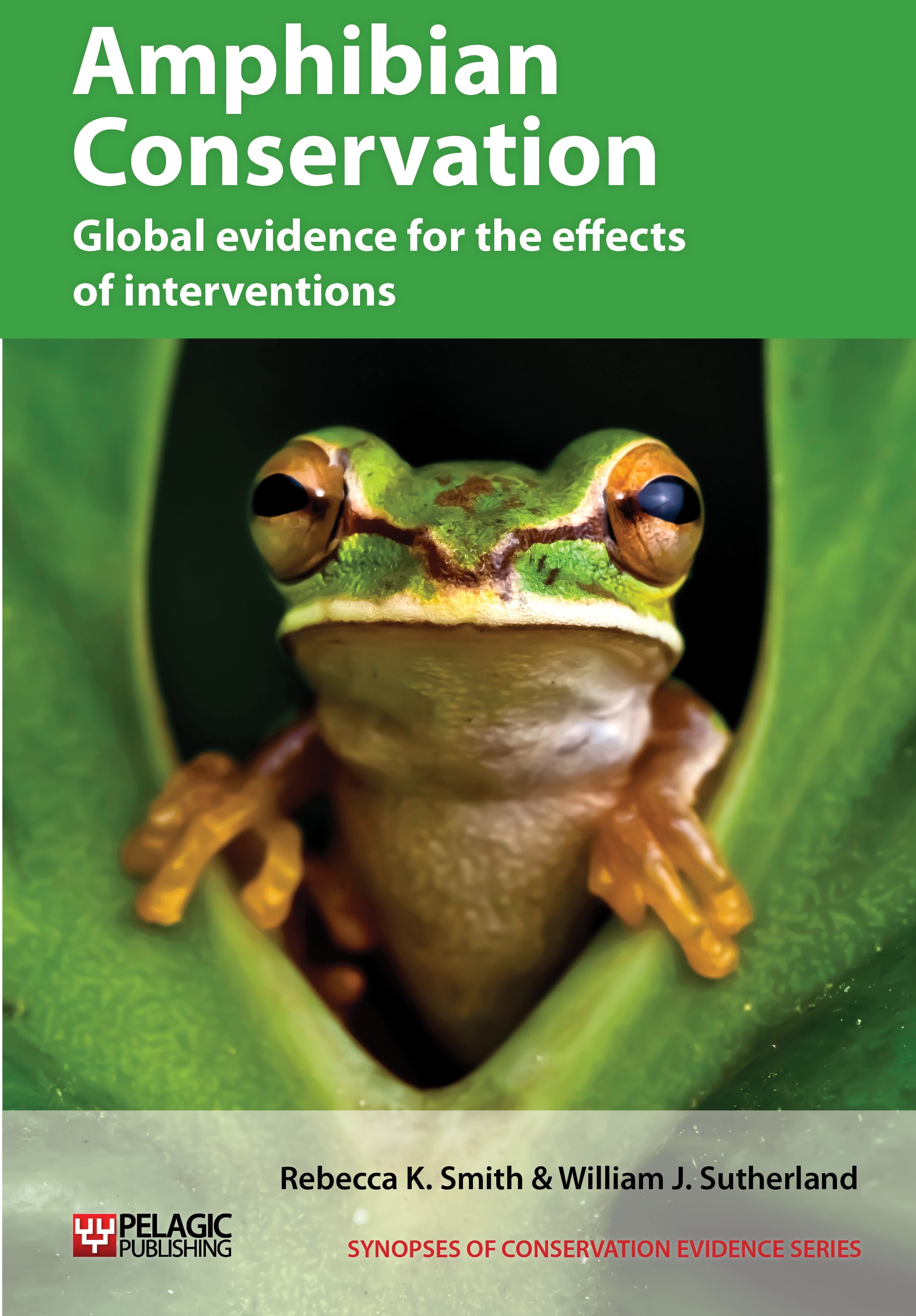Engage volunteers to collect amphibian data (citizen science)
-
Overall effectiveness category Likely to be beneficial
-
Number of studies: 7
View assessment score
Hide assessment score
How is the evidence assessed?
-
Effectiveness
66% -
Certainty
60% -
Harms
0%
Study locations
Supporting evidence from individual studies
A study in 2002 of a northern leopard frog Rana pipiens reintroduction programme in Alberta, Canada (Kendell 2003) found that over 100 volunteers became involved in the project. Volunteers included members of the general public and individuals from wildlife and commercial organizations. The project was also publicized on the radio, television and in three newspapers. Volunteers helped with frog surveys and the collection, marking and release of captive-reared frogs. Many of the volunteers, naturalist groups and school groups were given formal and informal presentations about the captive rearing programme and the natural history of Alberta’s reptiles and amphibians.
Study and other actions testedA study in 2005 of the volunteer-based North American Amphibian Monitoring Program (Weir & Mossman 2005) found that within eight years of establishment the programme was active in 17 states. The programme was established in 1997. Regional coordinators recruited and trained volunteer observers. Monitoring followed a specific protocol and involved stratified randomly placed roadside call surveys. These were undertaken along 25 km transects at night during three seasonal sampling periods.
Study and other actions testedA study in 2008 of a project investigating the distribution of the amphibian chytrid fungus Batrachochytrium dendrobatidis in the UK (Cunningham & Minting 2008) found that 96 breeding ponds in England, seven in Scotland, 16 in Wales and two in Jersey were sampled by volunteers engaged in the project. Almost 6,000 amphibians were swabbed for the disease. The secondary aim of the project had been to raise awareness of amphibians, the threat of the disease and the biosecurity measures that should be taken when visiting breeding ponds. Field work was largely carried out by volunteers, who were recruited and trained through voluntary county groups known as Amphibian and Reptile Groups. Ponds were visited to sample amphibians by skin swabbing (30/pond) in spring and summer.
Study and other actions testedA study in 1996–2003 of the Michigan Frog and Toad Survey in the USA (Genet et al. 2008) found that volunteers collected annual amphibian data for over 3,000 wetlands across Michigan. Between 255 and 350 routes were monitored by volunteers each year, each of which included 10 wetland sites. The programme was started in 1996 to collect data and to educate and raise awareness of amphibians and their habitats. Volunteers throughout the state monitored routes that included 10 wetlands separated by 400 m. These were surveyed using call surveys at night, three times in spring–summer.
Study and other actions testedA study in 1998–2010 of the FrogWatch USA citizen science programme (FrogWatch USA 2010) found that there were 10,506 registered volunteers and 20 organizations hosting FrogWatch groups in 16 states. Roughly a quarter of registered volunteers submitted data in 1998–2010 (17–43% per state). Monitoring of amphibians was undertaken at 7,872 sites by volunteers, with up to 591 visits/site. The project was run by the Association of Zoos and Aquariums, following standardized protocols that had been used since 1998. The project encouraged individuals and communities to learn about wetlands and help conserve amphibians by training volunteers to listen and report breeding calls of frogs and toads in local wetlands. Host institution coordinators were trained and then recruited, trained and supported local groups of volunteers. All resources and materials were available on the website. Data were used to help develop practical strategies for conservation.
Study and other actions testedA study in 2007–2009 of an online citizen science project, the Carolina Herp Atlas, in the USA (Price & Dorcas 2011) found that 698 volunteers registered and contributed 11,663 amphibian and reptile occurrence records. Numbers of records submitted by each volunteer varied from one to 4,452. Seventy-four people submitted 10 or more records. Distribution data were submitted for 32 frog and 51 salamander species, several of which were considered priority species in Carolina. Members of the public registered on the website to contribute data to the online database. Data were archived and distributed to a large online audience (registered and non-registered). Participants were initially recruited by contacting local and state wildlife managers, birding clubs, schools and other potentially interested groups. The project was advertised in wildlife-related publications and magazines and at scientific meetings in North and South Carolina.
Study and other actions testedA study in 2007–2012 of the National Amphibian and Reptile Recording Scheme in the UK (Wilkinson & Arnell 2011, Wilkinson & Arnell 2013) found that 277 surveys in England, 106 in Scotland, 27 in Wales and two in Northern Ireland were undertaken by volunteers engaged in the project in 2007–2012. By 2009, 100 training events had been held across the UK, resulting in over 1,500 trained volunteers. In 2009, over 1,800 people were signed up to the project via the website. The project was coordinated by Amphibian and Reptile Conservation, the Amphibian and Reptile Groups of the UK and other partners including Statutory Agencies. Volunteers were trained in species identification, survey methodologies and bio-security. They then monitored ponds within randomly selected 1 km grid squares across the UK. Ponds were sampled during 1–4 annual visits in 2007–2012. Surveys involved visual and torch searches, netting and sometimes bottle trapping (only by experienced surveyors). Habitat characteristics were also recorded.
Study and other actions tested
Where has this evidence come from?
List of journals searched by synopsis
All the journals searched for all synopses
This Action forms part of the Action Synopsis:
Amphibian Conservation
Amphibian Conservation - Published 2014
Amphibian Synopsis





)_2023.JPG)














